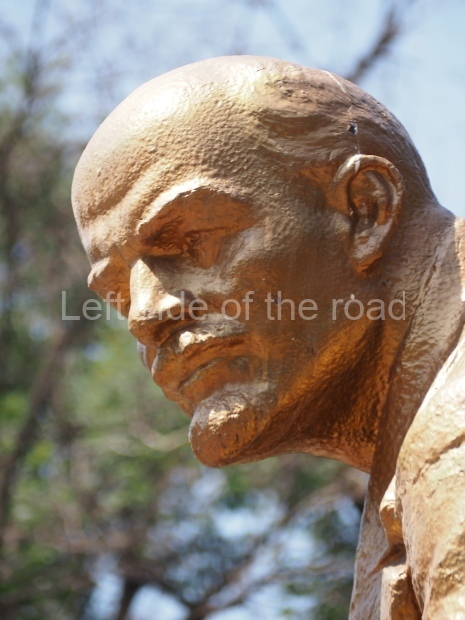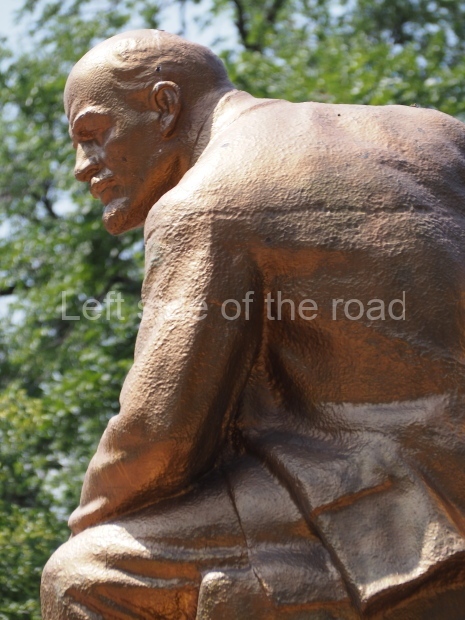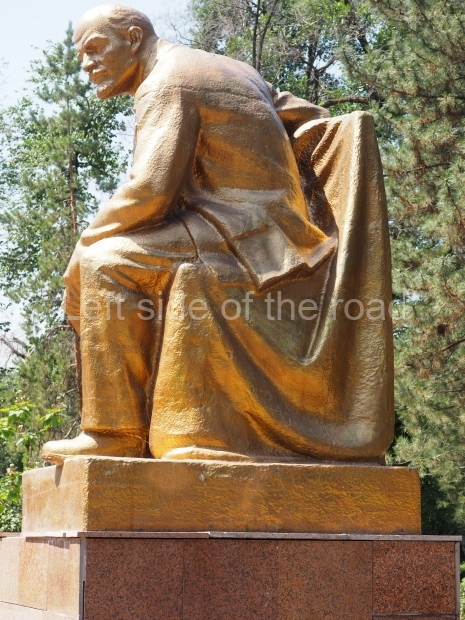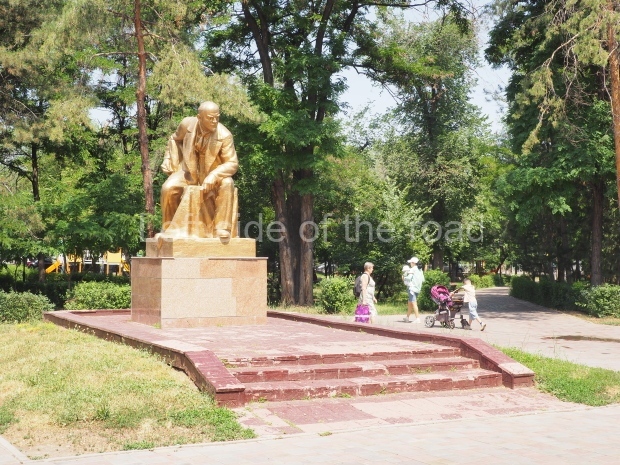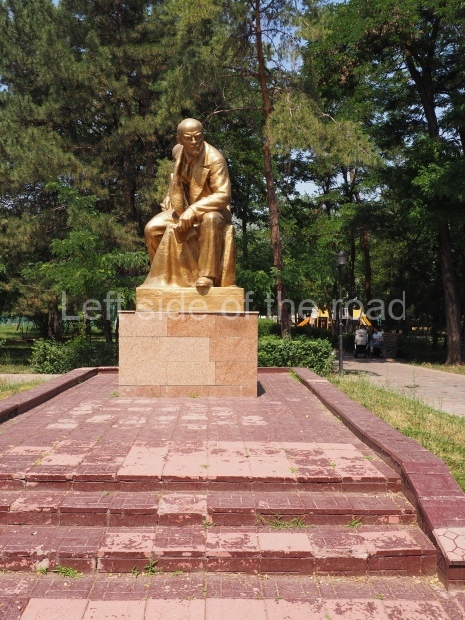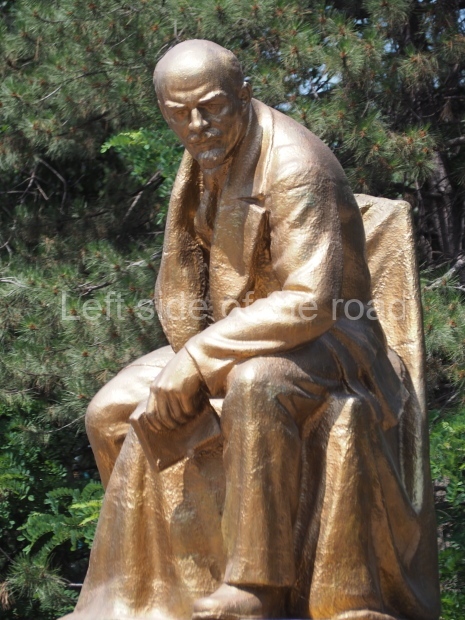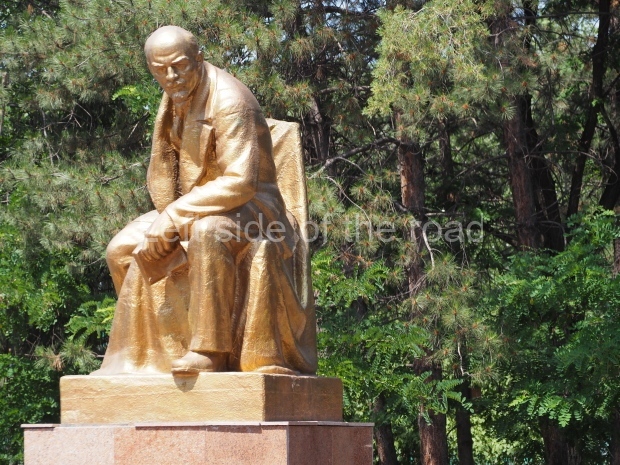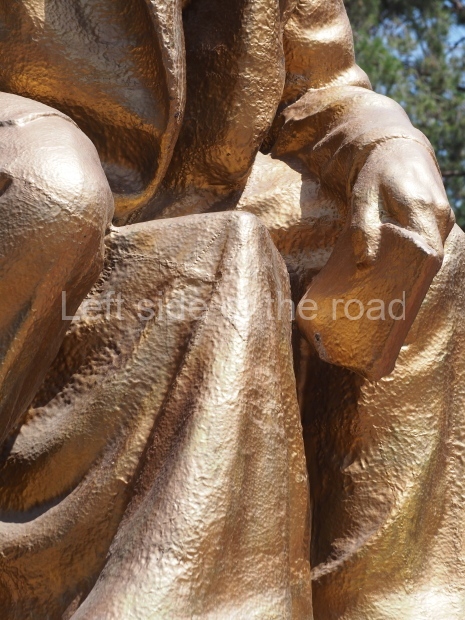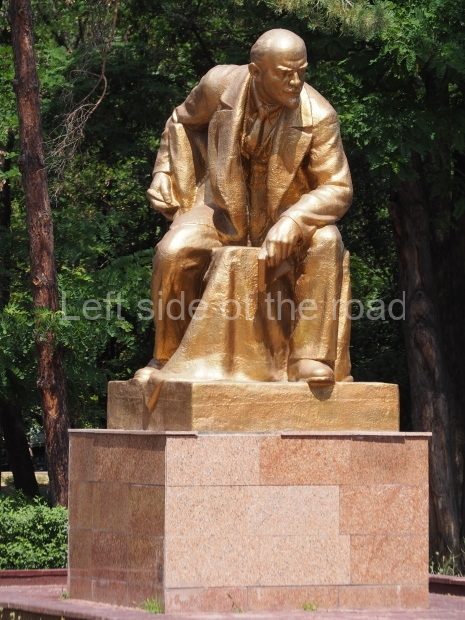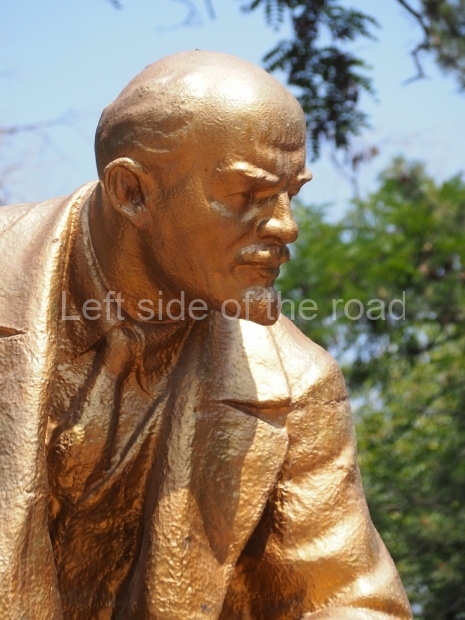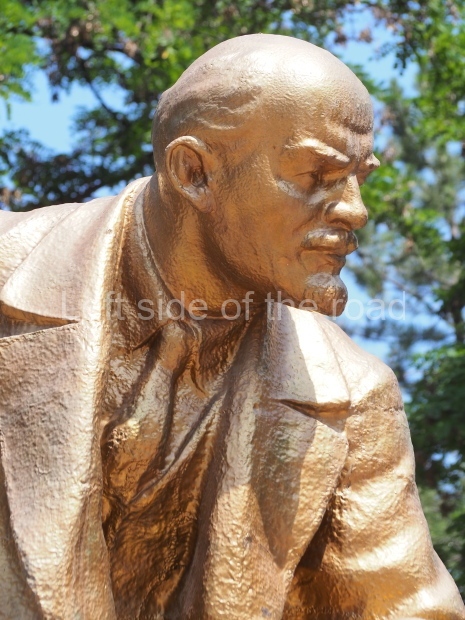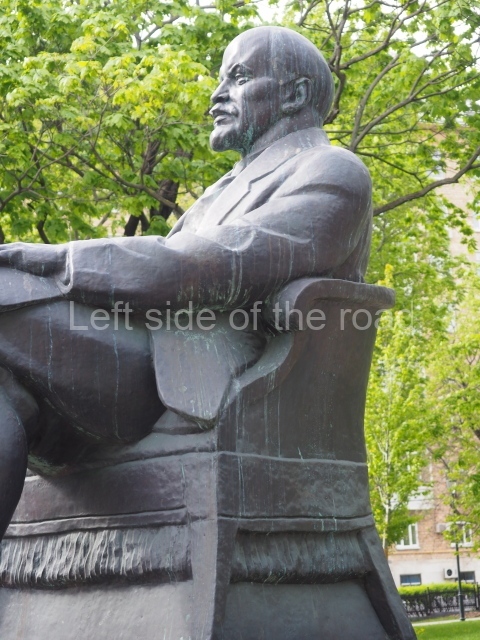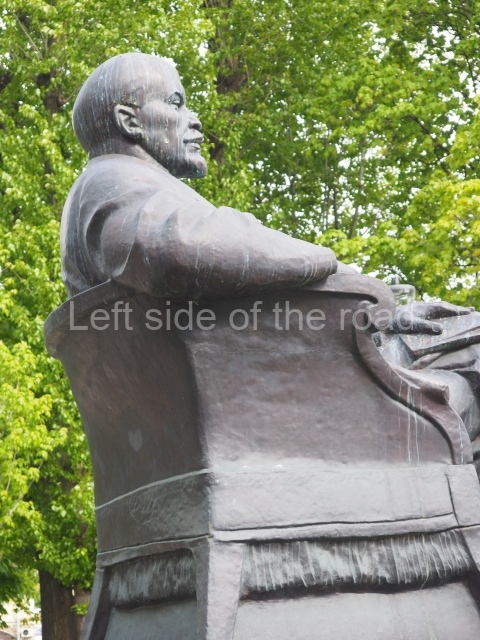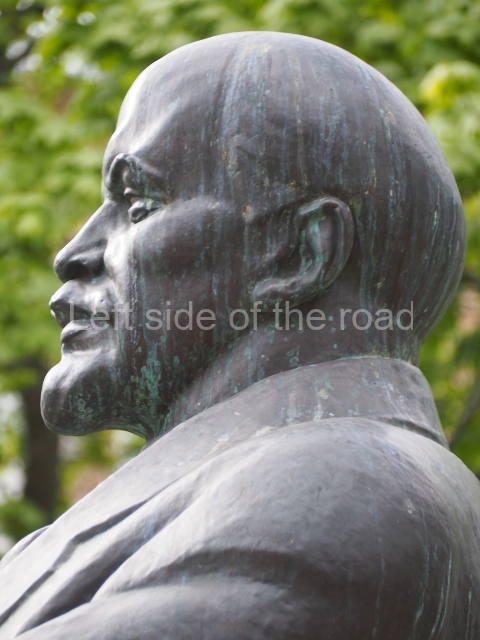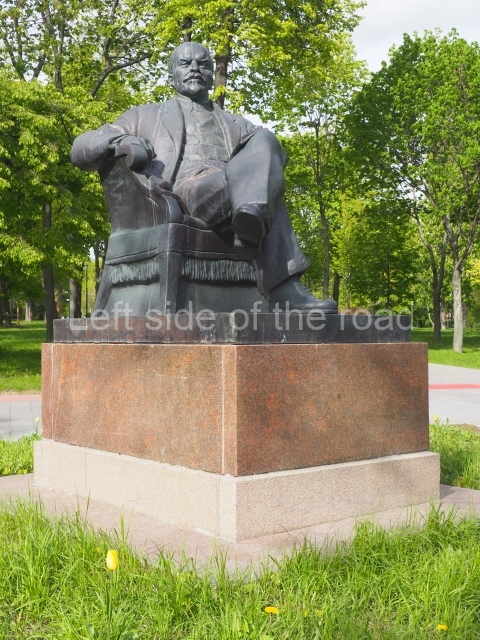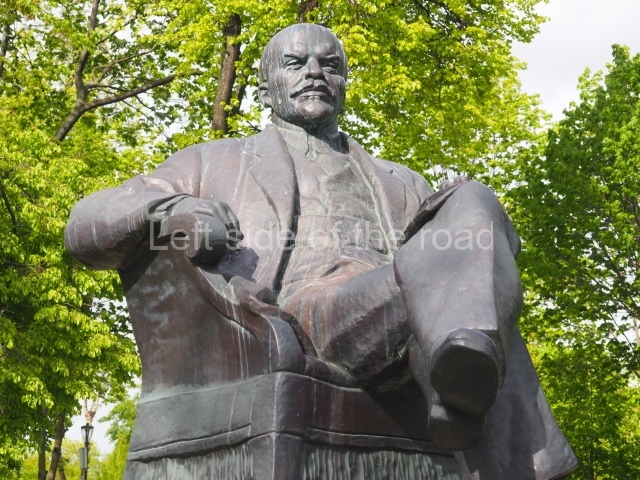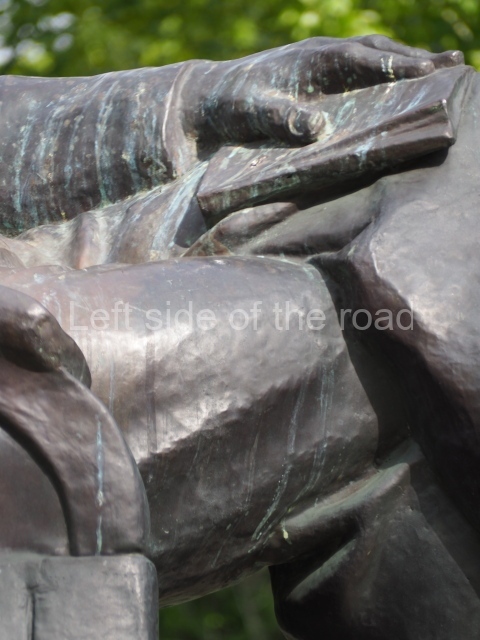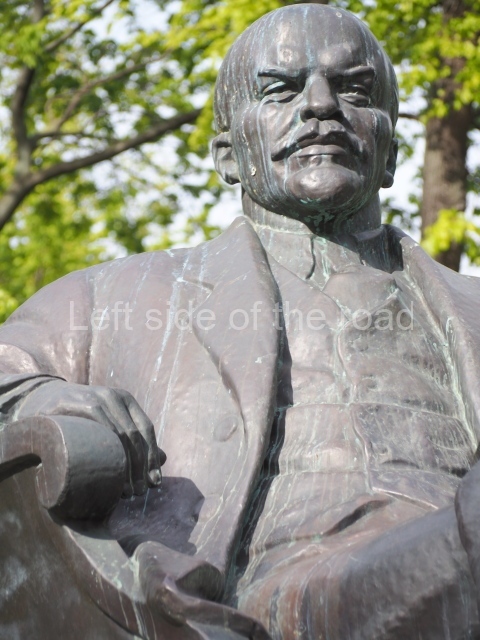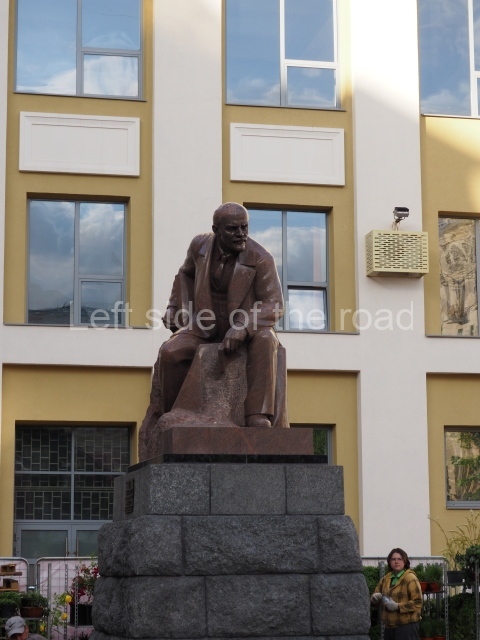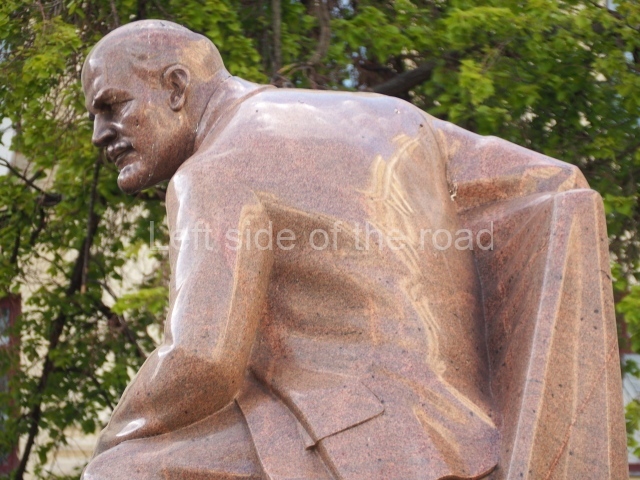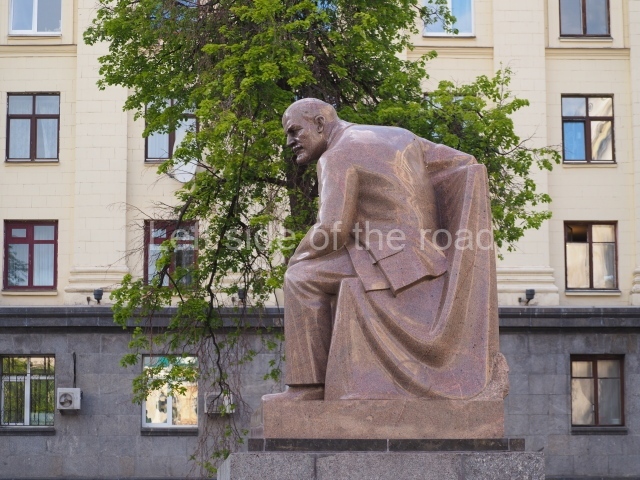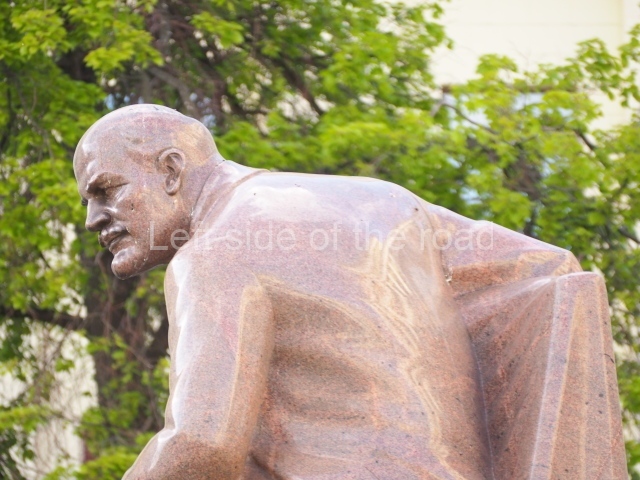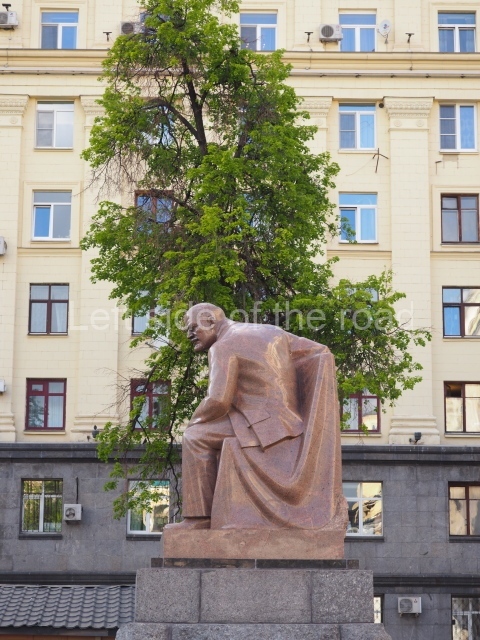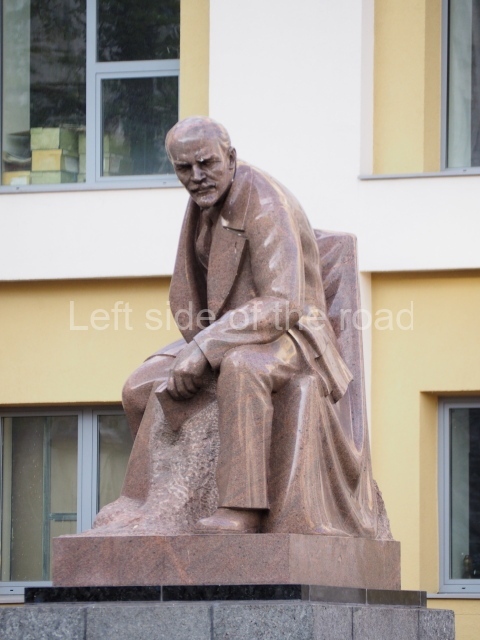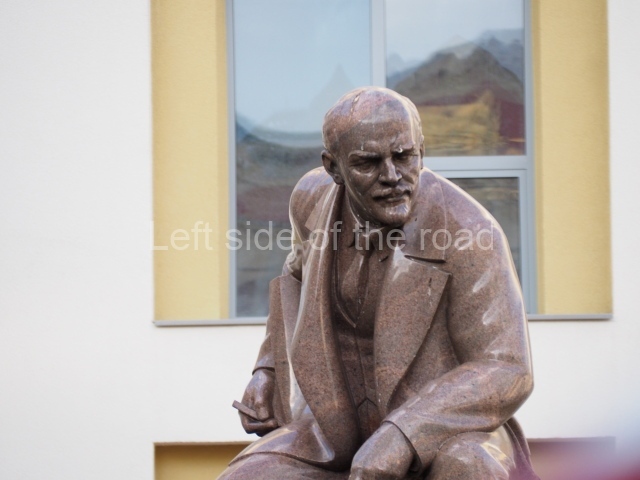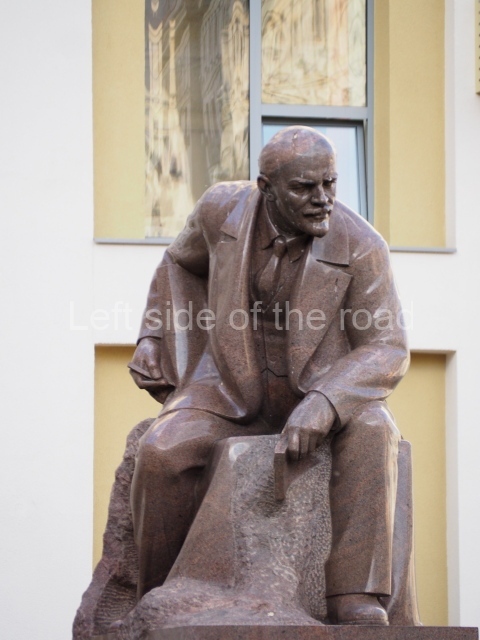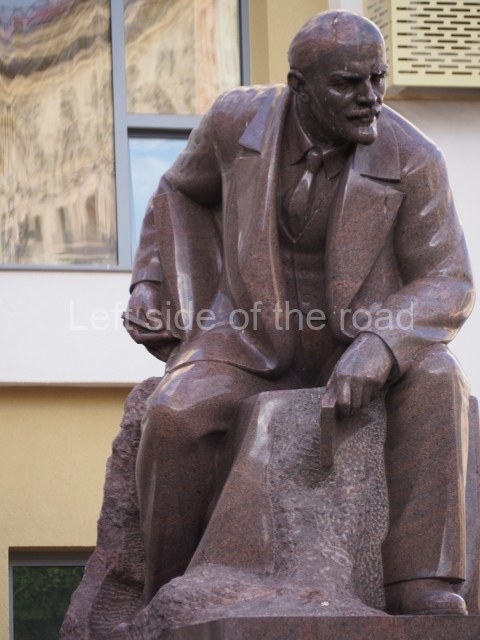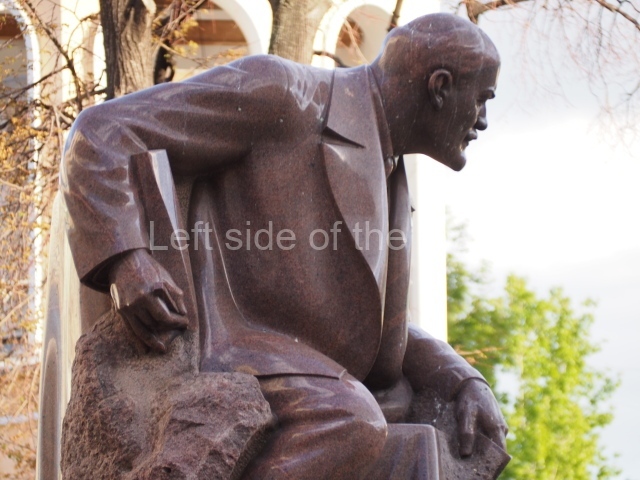VI Lenin in Stalingrad (Volgograd)
VI Lenin in ‘Lenin Park’, Almaty, Kazakhstan
This statue of VI Lenin, in very good condition (apart from having been painted in gold paint) sits in the centre of a small park which bears his name. I don’t think it is the official name for the park, which, as far as I can see on the maps has no name at all. However, this was how the area was referred to by the local gardeners in a bigger, nearby park, when I was searching for the statue with incomplete information.
This is an interesting statue of VI Lenin. He is seated and leaning forward slightly. In his left hand is a notebook and in his right, which is resting on the back of the chair, he is holding a pen. Comrade Lenin was renown for making notes at the very last minute before he was to give a speech so this is what could be represented here. Perhaps he has asked questions of others, seeking clarification of the facts before he includes them in his presentation. So here we have a statue with a bit of life, a bit of movement.
The statue looked in good condition – apart from (as I’ve already said) being painted in gold paint. I’m sure that wouldn’t have been its original colour but this is not the only example where the Kazakhs have painted a Lenin statue gold. It’s the same for the large, standing statue that can be found in ‘Family Park’, also in Altamy.
The plinth on which the statue stands could do with a little bit of maintenance and the grass on either side is wearing a bit thin but apart from that the location is clean and well maintained – as are many of the parks and green spaces in the city.
As is, unfortunately, often the case I have no more information about the statue, who the sculptor was or when it was installed etc.
Location;
On the corner of Seifullin Avenue and Sholokov Street, on the road to Almaty 1 Railway Station.
How to get there;
There are many buses and trolley-buses that leave the centre of the city heading to the Altamy 1 Railway Station. Many of those run along Seifullin Avenue and the nearest bus stop is only a couple of minutes walk from the park. Examples, bus 18, 30, trolleybus 7.
GPS;
43.335695 N
76.945433 E




